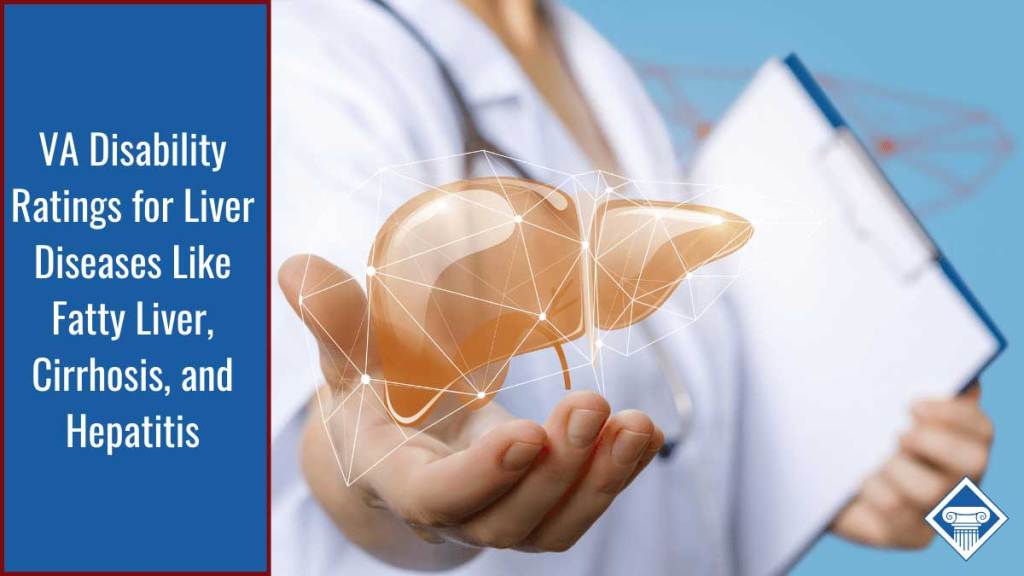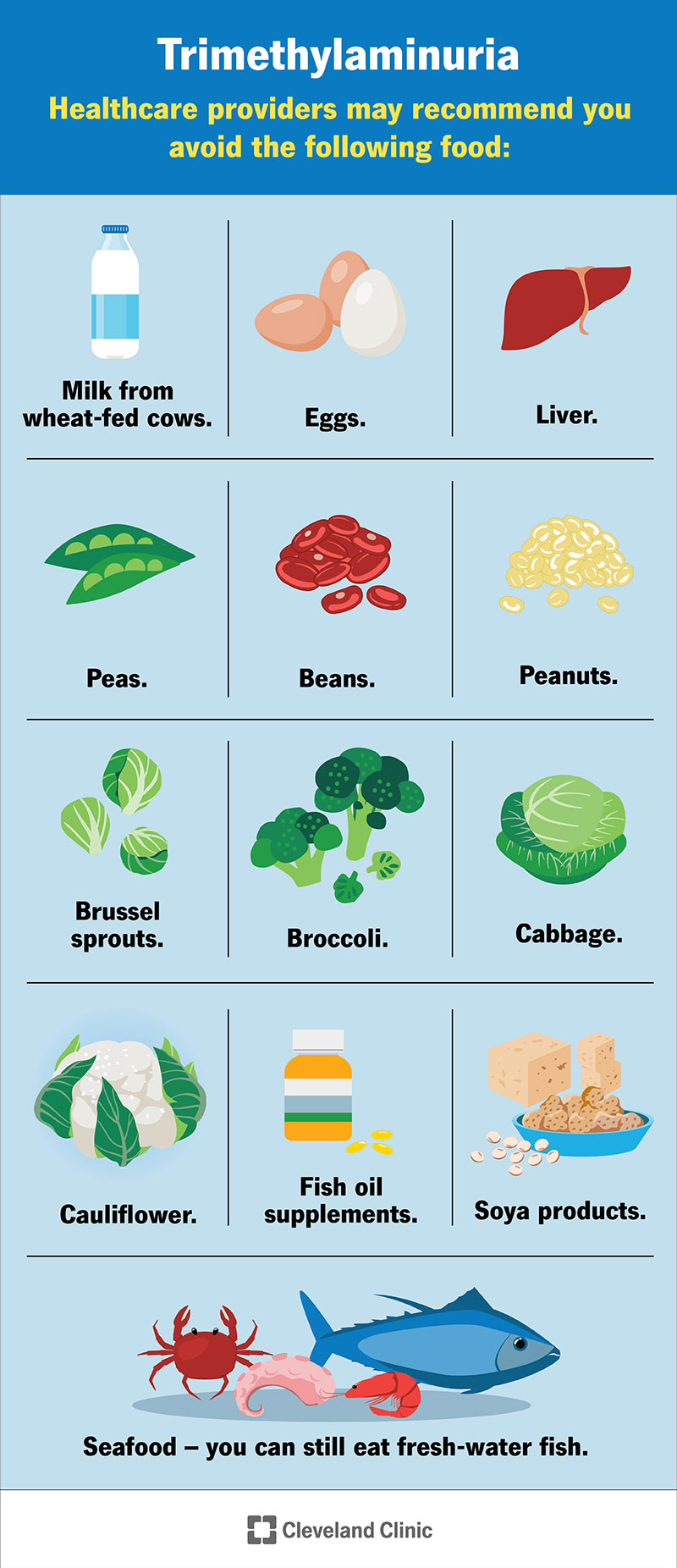If you’re a veteran with a liver condition connected to or worsened by your military service, you may be entitled to VA benefits. Understanding the various VA disability ratings for liver diseases can help you know if you qualify.
Liver disease is common, both in the general population and among veterans. People with liver disease, unfortunately, may not show symptoms of having a problem until the liver already is damaged. If you have a liver condition that is connected to your military service, you deserve VA disability benefits. Read on to understand more about VA disability ratings for liver disease and how you may qualify for benefits.
In this article about the VA rating for liver disease:
- Understanding liver disease
- Veterans and liver disease
- VA disability for liver conditions
- VA disability rating for cirrhosis of the liver
- Fatty liver VA rating
- Hepatitis VA rating
- Hemochromatosis VA disability rating
- Presumption of service connection for liver conditions
- TDIU for liver conditions
- How our VA-accredited attorneys can help
Understanding liver disease
Your liver is an important organ. It removes toxins from your blood, breaks down nutrients, and stores vitamins and energy, among other duties. When disease affects its functioning, it can cause significant health problems.
Liver disease is pretty common. More than 100 million people in the U.S. alone have it.
Causes of liver disease include:
- Viral infections like hepatitis A, B, or C
- Issues with your immune system
- Genetic conditions
- Obesity
- Cancer
- Consumption of or exposure to large amounts of toxins
Symptoms of liver disease include:
- Jaundice or a yellowing of the skin and eyes
- Abdominal pain and swelling
- Bruising easily
- Changes in the color of urine (dark) or stool (light)
- Chronic fatigue
- Loss of appetite, nausea, or vomiting
- Swelling in your limbs
Doctors can treat some liver diseases in the early stages through medications and lifestyle changes. If liver disease is advanced and a person is in liver failure, it can be fatal. In this case, the person likely needs a liver transplant. Liver transplants aren’t always possible because the patient has to be eligible for a transplant, and a healthy liver must be available.
Veterans and liver disease
Liver disease is common among veterans. One study found that about 40% of veterans receiving primary care have signs of liver disease, and nearly half of veterans receiving VA health care had risk factors associated with liver disease. The causes of liver disease in veterans include obesity, alcohol consumption, and exposure to toxins during service. Research also has found a relationship between post-traumatic stress disorder (PTSD) and liver disease. Veterans are more likely than the general population to have PTSD, also increasing the risk of disease to the liver.

VA disability for liver conditions
How the VA handles VA disability ratings for liver disease depends on the type of illness, severity and frequency of symptoms, and severity of damage. Most liver conditions rate using diagnostic code 7312 for cirrhosis, or 7345, for chronic liver diseases without cirrhosis. We share some of the common liver conditions veterans experience and how they rate below.
VA disability rating for cirrhosis of the liver
Cirrhosis is a condition that causes scarring on the liver. It reduces liver functioning and results in liver failure. Heavy alcohol consumption, infections, or fatty liver cause cirrhosis.
Cirrhosis of the liver can’t be cured, but doctors can help you manage symptoms and potentially slow down continued damage with medication and recommended lifestyle changes.
The VA rates cirrhosis using diagnostic code 7312 in the Schedule of Ratings for the Digestive System. It can be rated at 0%, 10%, 30%, 60%, or 100%, depending on symptoms and severity.
Diagnostic code 7312 Cirrhosis of the liver, rates as follows:
| Description | VA Rating | Monthly payment (vet only) |
|---|---|---|
| Liver disease with Model for End-Stage Liver Disease score greater than or equal to 15; or with continuous daily debilitating symptoms, generalized weakness and at least one of the following: (1) ascites (fluid in the abdomen), or (2) a history of spontaneous bacterial peritonitis, or (3) hepatic encephalopathy, or (4) variceal hemorrhage, or (5) coagulopathy, or (6) portal gastropathy, or (7) hepatopulmonary or hepatorenal syndrome | 100% | $3,737.85 |
| Liver disease with Model for End-Stage Liver Disease score greater than 11 but less than 15; or with daily fatigue and at least one episode in the last year of either (1) variceal hemorrhage, or (2) portal gastropathy or hepatic encephalopathy | 60% | $1,3161.88 |
| Liver disease with Model for End-Stage Liver Disease score of 10 or 11; or with signs of portal hypertension such as splenomegaly or ascites (fluid in the abdomen) and either weakness, anorexia, abdominal pain, or malaise | 30% | $524.31 |
| Liver disease with Model for End-Stage Liver Disease score greater than 6 but less than 10; or with evidence of either anorexia, weakness, abdominal pain or malaise | 10% | $171.23 |
| Asymptomatic, but with a history of liver disease | 0% | None |
Fatty liver disease, also known as hepatic steatosis, is when too much fat builds up in the liver. The liver then stores this fat instead of properly breaking it down, causing damage. This disease is typically caused by obesity, type 2 diabetes, high cholesterol, or excessive alcohol consumption.
Some veterans with alcoholism also may be able to connect the issue to their military service.
The VA rates fatty liver under diagnostic code 7345 in the Schedule of Ratings for the Digestive System. This rating applies to any liver condition that isn’t cirrhosis. Fatty liver disease can be rated at 10%, 20%, 40%, 60%, or 100%, depending on the severity and frequency of symptoms.
7345, Chronic liver disease without cirrhosis, rates as follows:
| Description | VA Rating | Monthly payment (vet only) |
|---|---|---|
| Progressive chronic liver disease requiring use of both parenteral antiviral therapy (direct antiviral agents), and parenteral immunomodulatory therapy (interferon and other); and for six months following discontinuance of treatment | 100% | $3,737.85 |
| Progressive chronic liver disease requiring continuous medication and causing substantial weight loss and at least two of the following: (1) daily fatigue, (2) malaise, (3) anorexia, (4) hepatomegaly, (5) pruritus, and (6) arthralgia | 60% | $1,3161.88 |
| Progressive chronic liver disease requiring continuous medication and causing minor weight loss and at least two of the following: (1) daily fatigue, (2) malaise, (3) anorexia, (4) hepatomegaly, (5) pruritus, and (6) arthralgia | 40% | $755.28 |
| Chronic liver disease with at least one of the following: (1) intermittent fatigue, (2) malaise, (3) anorexia, (4) hepatomegaly, or (5) pruritus | 20% | $338.49 |
| Previous history of liver disease, currently asymptomatic | 0% | None |
The diagnostic code includes a note that a 100% rating will continue for 6 months after “discontinuance of parenteral antiviral therapy and administration of parenteral immunomodulatory drugs.” At that point, you will need to attend a VA exam to determine your current disability rating.
Advanced fatty liver disease can result in cirrhosis, which leads to liver failure. The rating for cirrhosis is described in the section above.
Hepatitis VA rating
Hepatitis is inflammation of the liver, typically caused by the hepatitis virus. There are five primary hepatitis viruses: A, B, C, D, and E.
Hepatitis B and C are of greatest concern because they can spread rapidly and cause cirrhosis and cancer. Hepatitises B and C, as well as D, usually spread through bodily fluids.
Hepatitises A and E typically are caused by ingesting contaminated food or water.
The VA rates hepatitis with diagnostic code 7345 in the Schedule of Ratings for the Digestive System, just like fatty liver disease as described above. It can be rated at 10%, 20%, 40%, 60%, or 100%, depending on the severity and frequency of symptoms.
Hepatitis that results in cirrhosis is rated with diagnostic code 7312 in the Schedule of Ratings for the Digestive System, as described above. It can be rated at 10%, 30%, 50%, 70%, or 100%, depending on symptoms and severity.
Hemochromatosis VA disability rating
Hemochromatosis is a disorder that causes the body to store too much iron. This excess iron can then damage organs, including the liver. The only way to treat hemochromatosis is to remove blood (and, therefore, iron) from the body regularly.
The VA also rates hemochromatosis with diagnostic code 7345 in the Schedule of Ratings for the Digestive System. It can be rated at 10%, 20%, 40%, 60%, or 100%, depending on the severity and frequency of symptoms.
Presumption of service connection for liver conditions
To receive VA disability benefits, you must connect the current disability you have to your military service by either proving your service caused or exacerbated the issue. However, that’s not exactly the case with presumptive service connections.
Presumptive service conditions are those that the VA assumes are related to military service. Therefore, if you’re diagnosed with one of these conditions, you qualify for VA disability benefits on some level.
Cirrhosis of the liver is a presumptive condition if it’s diagnosed within a year after separation from the service because it’s considered a chronic condition. It also can be presumptive for a POW imprisoned for 30 or more days because of problems resulting from a lack of nutrition and inhumane treatment.
In addition, gastrointestinal cancer and liver cancer are presumptive if your military service put you in contact with burn pits or Camp Lejeune, respectively.
Primary liver cancer is a presumptive condition of ionizing radiation exposure, except if there are indications of cirrhosis or hepatitis B.
TDIU for liver conditions
In some cases, a veteran can be awarded total disability based on individual unemployability (TDIU) for liver conditions. Veterans are eligible for this benefit if they can’t maintain substantially gainful employment due to their service-connected condition. TDIU may be granted for a liver condition alone or may be granted based on the combined effects of other service-connected conditions.
Liver disease can leave a veteran with almost constant abdominal pain and swelling in their limbs that makes it difficult to move. It may keep them from performing work-related tasks like walking, standing, or sitting for long periods. It also may make them unable to tolerate working through the pain, depending on how severe the condition is. Frequent pain can also affect sleep, which may, in turn, affect focus and concentration on the job. Veterans may have even more difficulty working if they have additional service-connected conditions as well.
Veterans who receive TDIU are compensated at the 100% disability rating level even though their condition is rated below 100%.
Veterans will typically be eligible for TDIU if they have:
- At least one service-connected disability rated at 60% or more disabling OR
- Two or more service-connected disabilities with at least one rated at 40% or more disabling and a combined rating of 70% or more
How our VA-accredited attorneys can help
If you have a service-connected condition that affects your ability to live and work comfortably, you deserve VA disability compensation. Contact Woods and Woods today for a free consultation to see how we can help. You only pay us if we win.
Talk to Us About Your Claim:
(812) 426-7200
FREQUENTLY ASKED QUESTIONS
What is the VA rating for liver conditions?
The disability rating for liver disease depends on which disease and whether it’s connected to your military service or is a presumptive condition. The rating can be anywhere from 10% to 100%.
Does the VA recognize fatty liver disease?
Yes, you can get a fatty liver VA rating, although it may be easier to get disability benefits for nonalcoholic fatty liver. You also can receive VA disability benefits if fatty liver disease has advanced to cirrhosis.

Neil Woods
VA disability attorney
Woods & Woods
Neil Woods is the firm’s owner and president. He received his law degree from Western Michigan University.
VA Accreditation Number: 44739











